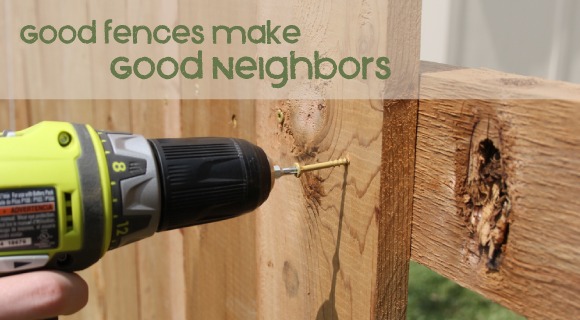You know the saying “good fences make good neighbors” is true, but where do you actually start? As with any project, first define your budget; it will help you determine both who will construct the fence and its material. Next, pinpoint its primary purpose. Do you want a privacy fence, a fence to keep pets in the yard or something that’s strictly decorative? Here are a few of your fencing options:
Picket Fencing — The classic picket fence looks great and can be inexpensive. This style can also contain pets fairly well, but it may not address privacy or security concerns.
Chain-Link Fencing — Chain-link fencing is popular with schools and institutions for a reason. Relatively inexpensive to install, chain-link fences are also durable. This option is great for containing pets, but it doesn’t do much for privacy.
Wood (Board-on-Board) Fencing — Wooden board-on-board fencesare what most homeowners think of as a traditional fence. They’re more expensive than chain link but offer more privacy and security.
Vinyl — Vinyl is comparable to wood (depending on design and height), but it can be more expensive. Its durability and low-maintenance requirements often make up for the initial investment.
Aluminum Fencing — If you want the look of wrought iron fencing without the high price tag, consider aluminum. Aluminum fencingrequires little to no maintenance, but many designs offer little privacy or security. Weather can also be an issue with this material. Because it’s lightweight, aluminum fencing may not be the best choice for areas prone to high winds.
Wrought Iron — Wrought iron has the advantages of strength, durability and beauty. This material can be shaped into just about any design and can last for years as long as it’s regularly maintained. Just keep in mind that these features come at a cost.

